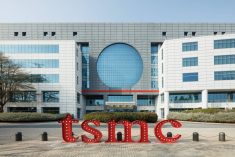In previous articles I’ve frequently mentioned the importance of selecting highly profitable companies at reasonable valuations. I’d like to illustrate with a real-life example of a switch I made in our tax-free savings accounts (TFSAs) at the start of the year. Our TFSA performance has lagged recently even though since inception they are still running with a 10 and 12 per cent compound annual growth rate.
My TFSA focus has been high-dividend Canadian and U.K. stocks, avoiding U.S. stocks because dividends are subject to U.S. withholding taxes when held in a TFSA. Over the past decade the TSX has compounded at a paltry 7.5 per cent compared to S&P 500 returns of 12 per cent. That’s a huge difference! To make matters worse, the U.K. market has been wretched, with just 4.9 per cent annual returns. As a result, I started diversifying into U.S. companies with low or no dividends, to reduce any impact from the withholding tax issue. Capital gains are tax-free in a TFSA and if a company doesn’t pay dividends, profits should manifest as capital gains.
I never make wholesale changes, so this transition is occurring over time. U.S. markets have dominated world markets over the past decade, growing from about 36 to 45 per cent of the world’s market cap. I expect this dominance to fade in time, but omitting U.S. companies from the TFSA has been a mistake.
Read Also

Gentle treatments for pain in the neck
Heading toward year-end, people unknowingly tense up against the cold and busyness, causing neck pain that can often be treated with appropriate support and gentle mobility, athletic therapist Kathlyn Hossack says.
I started transitioning a year ago with the purchase of two U.S. non-dividend payers: Adobe (ADBE) and Waters Corp. (WAT). Waters is up marginally, but Adobe almost doubled over the year. In January I continued transitioning by selling U.K.-based Pentair (PNR) and buying U.S.-based Mueller Industries (MLI) and Acuity Brands (AYI).
PNR is in the Titanium Strength Portfolio, and because I started the model by indicating the only changes will be reinvesting dividends, it will remain. It’s a decent enough company. All three of these companies are industrials, making comparisons easier.
Firstly, let’s review the key profitability and valuation metrics, as shown in these two lists. Many investors only focus on valuation metrics, but doing so in isolation of profitability metrics can lead to picking companies with low or no growth.
Key profitability metrics
- Return on equity (ROE): This is the net profit divided by the book value, or equity in the company.
- Return on assets (ROA): This is the net profit divided by the total assets employed by the company. Total assets are the sum of all liabilities plus equity, and so the difference between ROE and ROA is how much debt is employed. A big difference would be cautionary from a debt standpoint.
- Cash flow over assets (CF/A): This is the operating cash flow derived from all the assets employed. While I have never read of anyone else using this calculation, it is my favourite profitability metric, because cash flow is harder to manipulate than profit.
- Free cash flow (FCF): Operating cash flow minus capital expenditures.
Key valuation metrics
- Price-to-earnings ratio (P/E): How much you pay for each dollar of annual earnings.
- Price to cash flow (P/CF): How much you pay for each dollar of annual operating cash flow. While P/E is the most used valuation metric, I prefer P/CF.
- Price to free cash flow (P/FCF): How much you pay for each dollar of annual free cash flow.

I also look at the past 10 years’ growth of revenue, earnings and cash flow per share. It is good to see a doubling over a 10-year period and I like to see consistency from year to year. You can pay higher valuations if there is higher profitability and higher growth rates.
When I sold Pentair it had an ROE of 18.0, ROA of 7.8 and CF/A of 9.1 per cent, with a very high 87.1 per cent of cash flow becoming free cash flow. It was trading with a P/E of 22.4, P/CF of 19.3 and P/FCF of 22.1. While its profitability metrics were decent, its valuation was a little high. As a simple guideline, I like to see P/E lower than ROE and P/CF lower than CF/A.

When I bought Mueller Industries, it had an ROE of 32.0, ROA of 25.8 and CF/A of 29.2 with 93.2 per cent of cash flow becoming free cash flow. All these profitability metrics are excellent and well above Pentair’s. Its valuations were a P/E of 8.3, P/CF of 7.3 and P/FCF of 7.8, all lower than Pentair. That’s exactly what we want: higher profitability with lower valuations.
When I bought Acuity Brands it had an ROE of 17.8, ROA of 10.1, and CF/A of 16.9. While ROE was about the same as Pentair, ROA was better, indicating less debt, and CF/A was almost twice as good. Once again, a very high 89.1 per cent of cash flow became free cash flow. It was trading with a P/E of 19.0, P/CF of 11.5 and P/FCF of 13.0, all better valuations than Pentair. Once again: better profitability at a lower price.
There is more art in evaluating the growth aspect. Mueller’s revenue grew the least, but cash flow and profits grew the most, and exploded the last couple of years. Pentair’s growth was muted by the spinout of a major division, and Acuity was consistent, doubling revenue and quadrupling cash flow over the past decade.
Now, an important caveat: I don’t know which of these three companies will do best over the next year or 10 years. Pentair could improve its profitability, while Mueller or Acuity could make a disastrous buyout or other management decision or face unforeseen major lawsuits. These factors are beyond the control of a small shareholder. However, if we perpetually buy companies with better profitability at lower valuations, over time we are putting the probabilities in our favour, leading to better long-term portfolio performance.
From time of purchase until time of writing, which was only three weeks, Pentair was up 6.3, Mueller 8.2, and Acuity 16.9 per cent, so at least we started on the right foot.
















